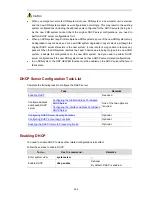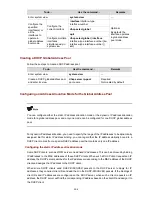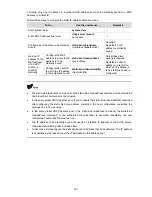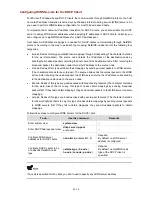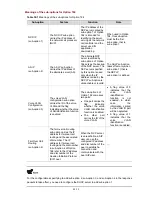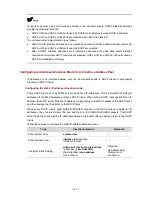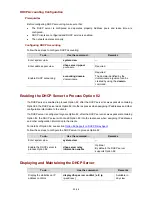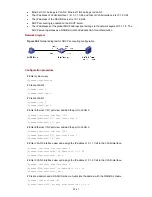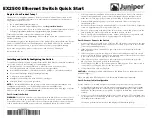
39-17
To improve security and avoid malicious attack to the unused sockets, S4500 Ethernet switches
provide the following functions:
z
UDP port 67 and UDP port 68 ports used by DHCP are enabled only when DHCP is enabled.
z
UDP port 67 and UDP port 68 ports are disabled when DHCP is disabled.
The corresponding implementation is as follows:
z
After a DHCP interface address pool is created by executing the dhcp select interface command,
UDP port 67 and UDP port 68 ports used by DHCP are enabled.
z
After a DHCP interface address pool is deleted by executing the undo dhcp select interface
command and all other DHCP functions are disabled, UDP port 67 and UDP port 68 ports used by
DHCP are disabled accordingly.
Configuring an Address Allocation Mode for an Interface Address Pool
IP addresses of an interface address pool can be statically bound to DHCP clients or dynamically
allocated to DHCP clients.
Configuring the static IP address allocation mode
Some DHCP clients, such as WWW servers, need fixed IP addresses. This is achieved by binding IP
addresses to the MAC addresses of these DHCP clients. When such a DHCP client applies for an IP
address, the DHCP server finds the IP address corresponding to the MAC address of the DHCP client,
and then assigns the IP address to the DHCP client.
When some DHCP clients send DHCP-DISCOVER packets to the DHCP server to apply for IP
addresses, they construct client IDs and add them in the DHCP-DISCOVER packets. The DHCP
server finds the corresponding IP addresses based on the client IDs and assigns them to the DHCP
clients.
Follow these steps to configure the static IP address allocation mode:
To do…
Use the command…
Remarks
Enter system view
system-view
—
Enter interface view
interface
interface-type
interface-number
—
Configure static binding
dhcp server static-bind
ip-address
ip-address
{
client-identifier
client-identifier | mac-address
mac-address
}
Required
By default, static
binding is not
configured.


